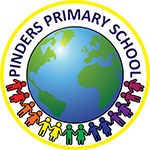How to help my child with their reading fluency
Reading Fluency
Fluency is defined as the ability to read with speed, accuracy, and proper expression.
In order to understand what they read, children must be able to read fluently whether they are reading aloud or silently. When reading aloud, fluent readers read in phrases and add intonation appropriately. Their reading is smooth and has expression.
Children who do not read with fluency sound choppy and awkward. Those students may have difficulty with decoding skills or they may just need more practice with speed and smoothness in reading. Fluency is also important for motivation; children who find reading laborious tend not to want read! As readers head into upper KS2, fluency becomes increasingly important. The volume of reading required in KS2 escalates dramatically. Children whose reading is slow or laboured will have trouble meeting the reading demands of their year group.
What parents can do to help at home
Support and encourage your child. Realize that he or she is likely frustrated by reading.
(1) Read Aloud to Your Child to Improve Reading Fluency.
Even if your child is old enough to read by himself, it’s helpful for him to hear someone more practiced read to him. Read aloud to your child to provide an example of how fluent reading sounds. Let them get a better sense of rhythm, intonation and, if you pick a variety of different genres, will develop an appreciation for all types of books.
(2) Work on Phonemic Awareness Skills
Many children have trouble with reading fluency because they have trouble understanding how the pieces of words (such as chunks, digraphs, and blends) are manipulated to make new words. Help your child decode words well, help him or her build speed and accuracy by:
- Reading aloud and having your child match his voice to yours
- Having your child practice reading the same list of words, phrase, or short passages several times.
- Reminding your child to pause between sentences and phrases
(3) Build Sight Word Vocabulary
Sight words, sometimes known as core words, are the foundation of a child’s reading and writing skills.3 If he can’t quickly recognize common words, your child is more likely to stumble as he tries to sound out everything he reads.
(4) Paired Reading
Paired reading can mean alternating sentences while you read with your child, or reading aloud together. Just come up with a signal to indicate when your child wants to read a sentence by herself or is stuck on a word.
(5) Echo Reading
Echo reading is a great strategy for children who have great technical reading skills, but for whom expressiveness is a problem. If your child struggles to read with expression, try reading a section and then having him “echo” you, using the same intonations and emphasis you used.
